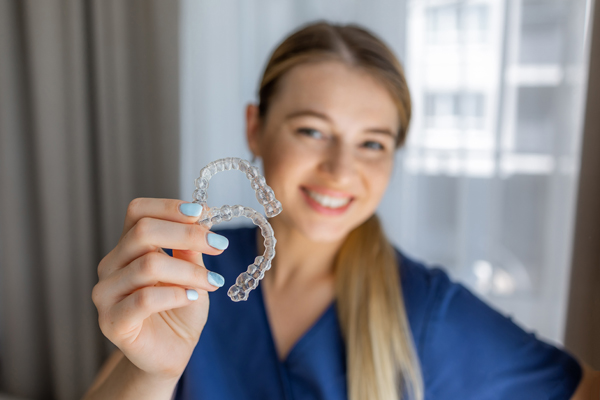Stylish Smiles: Choosing the Right Braces for Teens

With advances in orthodontics, there are now more options than ever when it comes to braces for teens. From traditional metal braces to nearly invisible aligners, there is a style and solution for every teen’s unique needs. Understanding these choices helps families select the teeth straightening option best suited to their teen.
The importance of braces for teens
The teenage years can be ideal for orthodontic treatment because a teen’s mouth and jaw are still growing, making it easier to guide teeth into their proper positions. Proper tooth alignment not only improves appearance but also promotes oral health by making it easier to clean teeth, reducing the risk of cavities and gum disease. Additionally, correcting bite problems, such as overbites and underbites, can alleviate strain on the jaw, preventing discomfort and long-term complications.
Types of braces for teens
Orthodontists offer several types of braces for teens, allowing them to choose a solution that fits their preferences and budget.
Traditional metal braces
Traditional braces, consisting of metal brackets and wires, are the most common choice for teens. This style of braces is highly durable and effective for treating a wide range of orthodontic issues. In addition, teens often appreciate the ability to customize their braces with colorful elastic bands, adding a touch of personal style to their treatment.
Ceramic braces
Ceramic braces function like metal braces but use clear or tooth-colored brackets that blend with the teeth. This style offers teens a more discreet option for those uncomfortable wearing obvious metal braces. While ceramic braces are less durable than metal, they offer a great balance between aesthetics and functionality.
Lingual braces
Lingual braces are attached to the back of the teeth, making them virtually invisible from the front. This option is ideal for teens who are self-conscious about their appearance during treatment. However, lingual braces may take significantly more time to adjust to and can be more difficult to clean due to their position on the back of the teeth.
Clear aligners
Clear aligners like Invisalign® are a popular alternative to traditional braces. These removable trays are custom-made to fit a teen’s teeth and gradually shift them into place. The teen gets a new set of aligners every few weeks, moving them closer to their goal alignment. Clear aligners are nearly invisible and do not present challenges when eating or performing dental hygiene. However, they require discipline to wear as directed and may not be suitable for all orthodontic issues.
Factors to consider when choosing braces
Selecting the right braces for teens involves considering their lifestyle, treatment goals, and budget. The following are key factors to keep in mind.
Appearance
Some teens may prefer less noticeable orthodontic treatment, such as ceramic braces or clear aligners. Others might enjoy the opportunity to customize their look with colorful bands on metal braces.
Comfort
Orthodontic treatment can involve some discomfort, especially after adjustments. Clear aligners have fewer sharp edges and tend to be more comfortable than traditional options.
Treatment duration
Time commitments vary by treatment, and certain styles work faster than others. Metal braces often produce results the fastest, while clear aligners may take longer, especially for complex cases.
Maintenance
Keeping braces clean is essential for oral health during treatment. Traditional and lingual braces require careful brushing and flossing to prevent plaque buildup. While clear aligners allow teens to brush and floss normally and are easier to maintain, the patient must clean the trays regularly to avoid staining.
Cost
The cost of braces varies depending on the type and length of treatment. Metal braces are generally the most affordable, while options like clear aligners or lingual braces may be more expensive.
Helping teens adjust to braces
Wearing braces can be a big adjustment for teens, but with the right support, they can confidently embrace the process. Parents can encourage teens to maintain oral hygiene by providing tools such as orthodontic flossers and soft-bristle toothbrushes. Regular visits to the orthodontist help ensure treatment stays on track and concerns are addressed promptly.
The right fit for your teen
Braces for teens offer a pathway to straighter and healthier smiles that can last a lifetime. With various options like metal braces, ceramic braces, lingual braces, and clear aligners, almost any teen can find a treatment that suits their lifestyle and needs. By working with an orthodontist, families can ensure the process is smooth and successful. Call our team today to learn more about our orthodontic treatment options or schedule a consultation for your teen.
Request an appointment here: https://www.orthodonticprecision.com or call Precision Orthodontics & Pediatric Dentistry at (703) 391-8800 for an appointment in our Reston office.
Check out what others are saying about our services on Yelp: Read our Yelp reviews.
Recent Posts
A general dentist is often the first to inform parents that a teenage patient needs braces. As an orthodontic option, Invisalign® for teens can produce results in just a few months with minimal discomfort. This process can work to straighten teeth that are out of line, crooked, or twisted, and there may be no need…
Invisalign® for Teens can straighten teeth without any metal brackets or wires. Instead, it uses clear aligners to help teenage patients achieve a more picture-perfect smile. Although popular and well-known, it is common for parents to have questions about how this treatment works for younger patients. Knowing what to expect with Invisalign for Teens from…
Teeth straightening can do more than simply enhance the appearance of one's smile. Straighter teeth are easier to clean, helping patients maintain their oral health in the process. Crowded or severely crooked teeth are more difficult to clean, which can lead to cavities. Thankfully, an orthodontist can help patients straighten their teeth in various ways…
Invisalign® for teens is an invisible straightening tool for your children's teeth. Invisalign uses custom, clear aligners to straighten teeth. Patients receive Invisalign aligners every two weeks. The custom trays move teeth gradually.When most people think about metal braces, they may think about teenagers. However, not all teenagers require traditional braces. Some teenagers may benefit…


